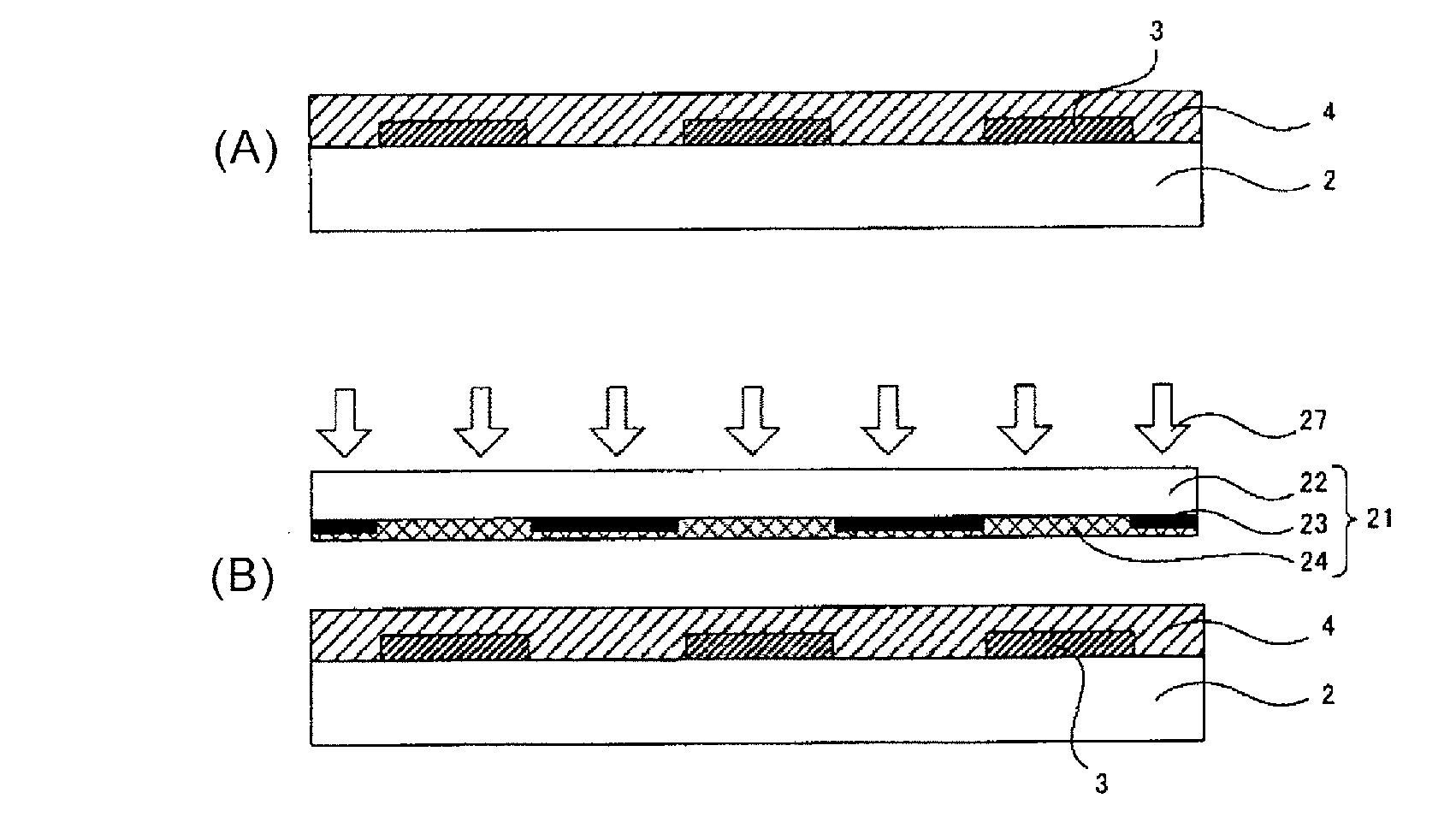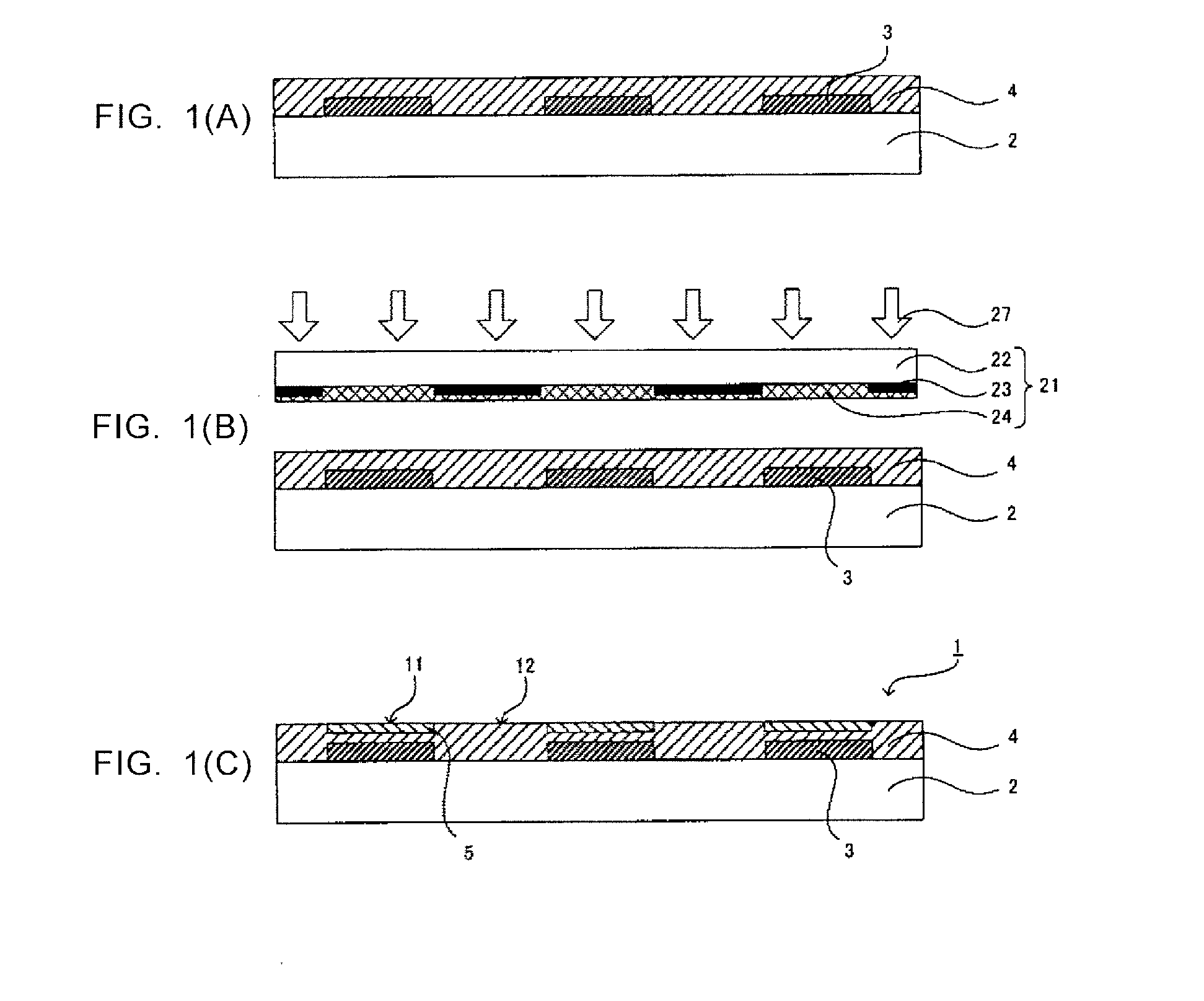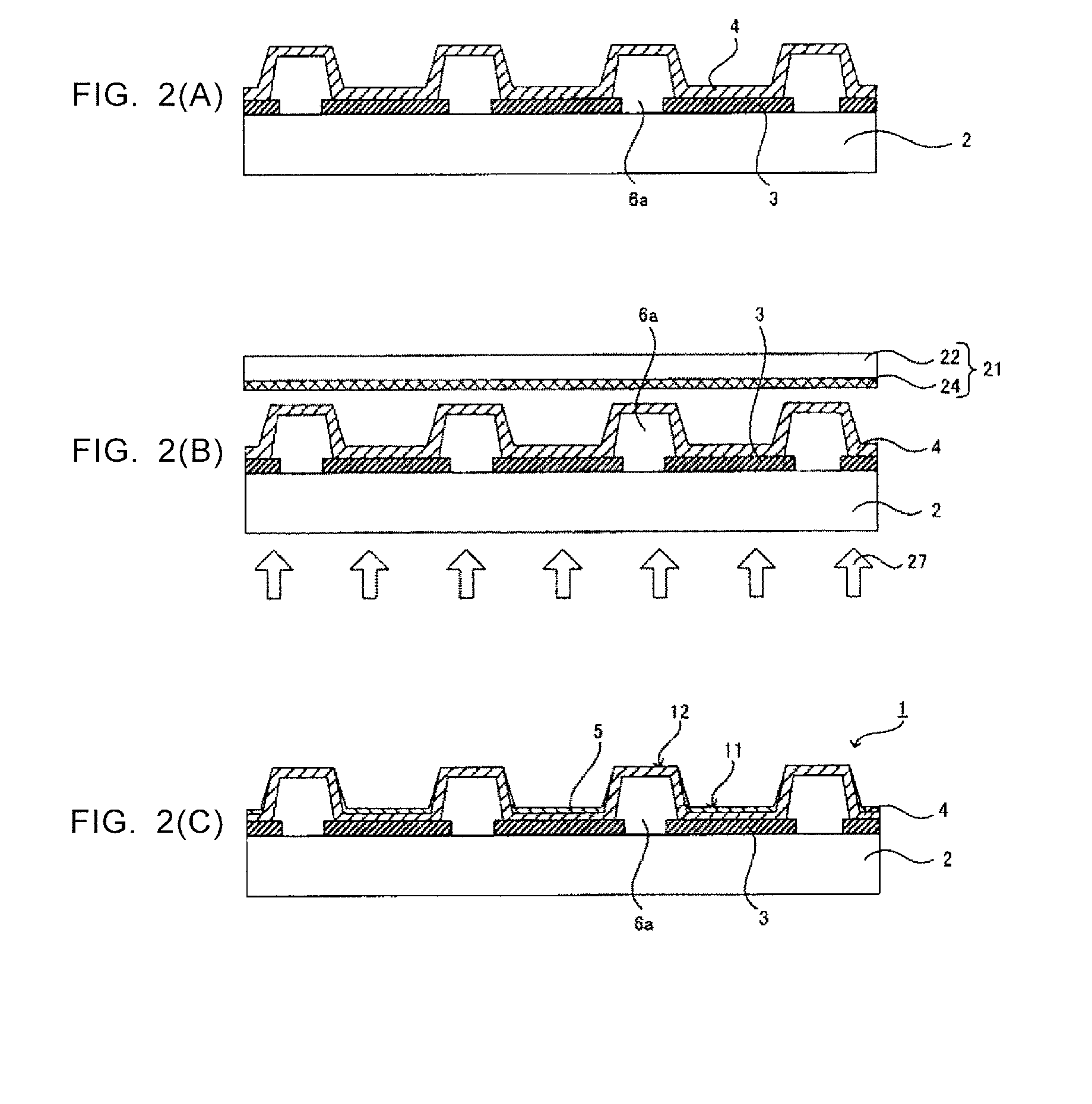Device material for hole injection transport layer, ink for forming hole injection transport layer, device comprising hole injection transport layer, and method for producing the device
a technology of transport layer and ink, which is applied in the direction of thermoelectric devices, organic semiconductor devices, nano-informatics, etc., can solve the problems of difficult to obtain a long life or a further increase in life, poor interface adhesion to an adjacent organic compound layer, negative effect on life properties, etc., and achieve excellent hole injection transporting properties, high process resistance, and the effect of wettability that can be altered
- Summary
- Abstract
- Description
- Claims
- Application Information
AI Technical Summary
Benefits of technology
Problems solved by technology
Method used
Image
Examples
synthesis example 1
[0317]Molybdenum-containing nanoparticles protected by 4,4,5,5,6,6,7,7,8,8,9,9,10,10,11,11,11-heptadecafluoroundecylamine were synthesized in the following manner. First, 3.2 g of n-octyl ether (manufactured by Tokyo Chemical Industry Co., Ltd.) was weighed out and put into a 25 ml three-necked flask. The pressure inside the flask was reduced while stirring, and the flask was left for 1.5 hours at room temperature (24° C.) for removal of low volatility components. After switching from vacuum to air atmosphere, 0.2 g of molybdenum hexacarbonyl (manufactured by Kanto Chemical Co., Inc.) and 0.4 g of 4,4,5,5,6,6,7,7,8,8,9,9,10,10,11,11,11-heptadecafluoroundecylamine (manufactured by Fluka Chemical Corp.) were added thereto. The mixed solution was heated to 250° C. while stirring in an argon gas atmosphere, and kept at the temperature for one hour. Then, the mixed solution was cooled to room temperature (24° C.). After switching from the argon gas atmosphere to the air atmosphere, 5 g o...
synthesis example 2
[0318]Molybdenum-containing nanoparticles protected by 4-(3,3,4,4,5,5,6,6,7,7,8,8,9,9,10,10,10-heptadecafluorodecyl)benzylamine were synthesized in the following manner. First, 6.4 g of n-octyl ether (manufactured by Tokyo Chemical Industry Co., Ltd.) was weighed out and put into a 25 ml three-necked flask. The pressure inside the flask was reduced while stirring, and the flask was left for 2.5 hours at room temperature (24° C.) for removal of low volatility components. After switching from vacuum to air atmosphere, 0.4 g of molybdenumhexacarbonyl (manufactured by Kanto Chemical Co., Inc.) and 0.9 g of 4-(3,3,4,4,5,5,6,6,7,7,8,8,9,9,10,10,10-heptadecafluorodecyl)benzylamine (manufactured by Sigma-Aldrich Corporation) were added thereto. The mixed solution was heated to 250° C. while stirring in an argon gas atmosphere, and kept at the temperature for one hour. Then, the mixed solution was cooled to room temperature (24° C.). After switching from the argon gas atmosphere to the air a...
synthesis example 3
[0319]Tungsten-containing nanoparticles protected by 4,4,5,5,6,6,7,7,8,8,9,9,10,10,11,11,11-heptadecafluoroundecylamine were synthesized in the following manner. First, 6.4 g of n-octyl ether (manufactured by Tokyo Chemical Industry Co., Ltd.) was weighed out and put into a 25 ml three-necked flask. The pressure inside the flask was reduced while stirring, and the flask was left for 3 hours at room temperature (24° C.) for removal of low volatility components. After switching from vacuum to air atmosphere, 0.4 g of tungstenhexacarbonyl (manufactured by Sigma-Aldrich Corporation) and 0.8 g of 4,4,5,5,6,6,7,7,8,8,9,9,10,10,11,11,11-heptadecafluoroundecylamine (manufactured by Fluka Chemical Corp.) were added thereto. The mixed solution was heated to 250° C. while stirring in an argon gas atmosphere, and kept at the temperature for one hour. Then, the mixed solution was cooled to room temperature (24° C.). After switching from the argon gas atmosphere to the air atmosphere, 10 g of eth...
PUM
| Property | Measurement | Unit |
|---|---|---|
| particle diameter | aaaaa | aaaaa |
| thickness | aaaaa | aaaaa |
| diameter | aaaaa | aaaaa |
Abstract
Description
Claims
Application Information
 Login to View More
Login to View More - R&D
- Intellectual Property
- Life Sciences
- Materials
- Tech Scout
- Unparalleled Data Quality
- Higher Quality Content
- 60% Fewer Hallucinations
Browse by: Latest US Patents, China's latest patents, Technical Efficacy Thesaurus, Application Domain, Technology Topic, Popular Technical Reports.
© 2025 PatSnap. All rights reserved.Legal|Privacy policy|Modern Slavery Act Transparency Statement|Sitemap|About US| Contact US: help@patsnap.com



